Use controls above or click here to open this Hometown Heroes podcast in a new window
Episode #740 of Hometown Heroes, airing July 1-4, 2022 originates from the USS Hornet Sea, Air, & Space Museum, focusing extensively on one of the historic aircraft carrier’s hidden gems, a Nisei Veterans Exhibit chronicling the contributions of Americans of Japanese ancestry during World War II.
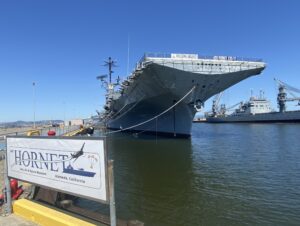
The Hornet, an aircraft carrier launched in 1943, had an extensive career that also included retrieving the Apollo 11 astronauts upon their return from the first moon landing in 1969. So much of the ship’s history is there to see, touch, and feel in Alameda, CA, home to the Hornet since 1998.
“We are the most decorated ship in Navy history for World War II,” you’ll hear museum volunteer Cynthia Savoie say. “We shot down more planes, sank more ships than any other vessel.”
Aircraft accessible on the museum ship traverse the spectrum from a TBM Avenger like the one future president George H.W. Bush flew in World War II, to an F-14 Tomcat like Tom Cruise flew in the original Top Gun movie, which was filmed in large part aboard the USS Hornet. This episode of Hometown Heroes focuses on a fascinating chapter of history that visitors are often surprised to find captured so thoroughly aboard an aircraft carrier: a multi-layered exhibit with memorabilia, books, videos, and artifacts relating to the World War II service of roughly 33,000 Americans of Japanese ancestry. The video below gives you a quick overview of the different elements of that display, which include tributes to several veterans who have shared their stories on Hometown Heroes:
Each room in the Hornet Museum’s Nisei Veterans Exhibit is named for a different veteran, including one dubbed in honor of Lawson Sakai, who shared his story on episodes #405 and #406 of Hometown Heroes in 2016. This weekend’s episode includes some of Sakai’s memories from how his life in southern California changed after December 7th, 1941.
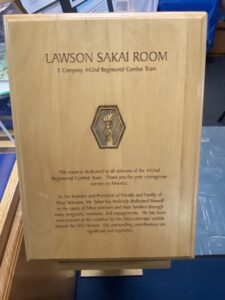
“It was Sunday morning, I was doing homework, and I was listening to my radio, when the announcer broke in and said Pearl Harbor had been attacked,” you’ll hear Sakai recall. “I didn’t pay much attention to it, because I really didn’t know where Pearl Harbor was.”
Later that day, Sakai’s uncle was taken away from the family’s farm by FBI agents. The next day, Lawson tried to enlist in the Navy, only to be told he was ineligible to serve, classified as 4-C, or “enemy alien.” Seventh Day Adventist church contacts helped the Sakai family move north to California’s San Joaquin Valley, then to Colorado once Executive Order 9066 made clear the injustice that Americans of Japanese ancestry would be subjected to on the West Coast. He found his way into the V-12 Navy College Training Program at Colorado Mesa University in Grand Junction, CO, but once his Japanese heritage was discovered, that opportunity was curtailed. As it turned out, Lawson was destined to serve in the most decorated unit of its size in all of World War II, the 442nd Regimental Combat Team.
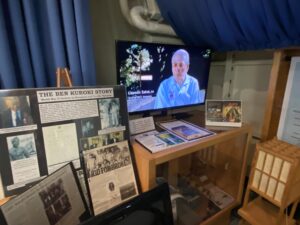
Sakai was wounded four times during World War II, including a significant wound during the push to rescue the “Lost Battalion,” an achievement that the “Go For Broke” soldiers of the 442nd remain famous for nearly eight decades later. Another member of the 442nd who helped liberate those surrounded and starving soldiers was George T. “Joe” Sakato, a Medal of Honor recipient who first related his memories to Hometown Heroes listeners in 2011. Sakato was memorialized on episode #399 in 2015. 211 men from the 1st battalion, 141st Infantry Regiment, 36th Infantry Division, most of them Caucasian, were rescued by the 442nd RCT, which suffered more than 800 casualties in the process. Like Lawson Sakai, Joe Sakato was wounded and taken out of action before the rescue was complete. You’ll hear him explain what he did, and you can also read about it in this citation. Wounded, but still ambulatory, he made his way toward an aid station.
“I’m the only one there, going toward the aid station,” You’ll hear Joe recall. “The Germans sent up a mortar shell. It landed ten feet away from me, picked me up, and blew me closer to the aid station.”
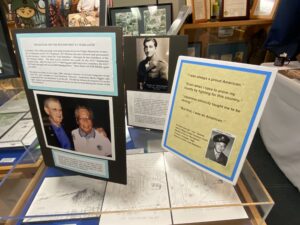
Joe spent the next three months, including Thanksgiving, Christmas, and New Year’s, in a hospital in France. More hospital time followed in England, where a “buzz bomb” attack grabbed his attention. In May, 1945, he was still recuperating from his injuries in a Vancouver, WA hospital when he learned he had been awarded the Distinguished Service Cross. Nearly five decades later, that decoration was upgraded to the Medal of Honor, America’s highest military award. Photos, information, and quotes relating to Joe Sakato’s story are also found in the USS Hornet’s Nisei Veterans Exhibit.
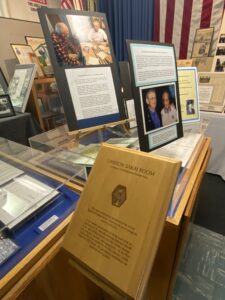
Depicted right between photos of Sakai and Sakato at the museum is Al Tortolano, one member of that “Lost Battalion” who was rescued as a result of the heroics of Sakai, Sakato, and so many other Go For Broke Soldiers from the 442nd RCT. Tortolano shared his story on episode #158 of Hometown Heroes in 2010, including the memory of the unique setting in which met one of his liberators, Lawson Sakai. If you are moved by what you hear from these World War II veterans on Hometown Heroes, go learn more about them and countless other veterans at the USS Hornet Sea, Air, & Space Museum. The ship will be open from 10 am until 5 pm on Independence Day, July 4th, 2022.
—Paul Loeffler

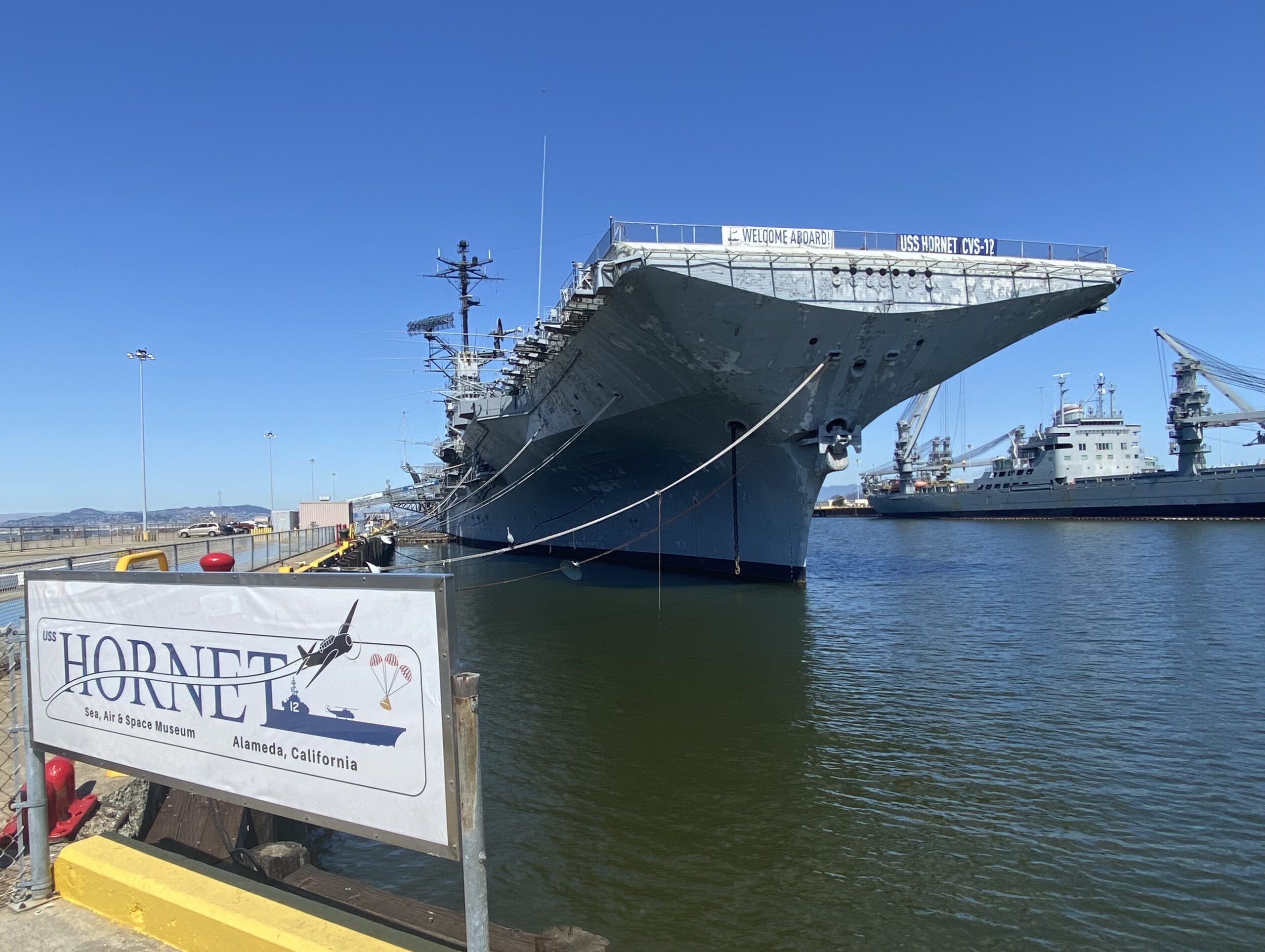
Leave a Reply